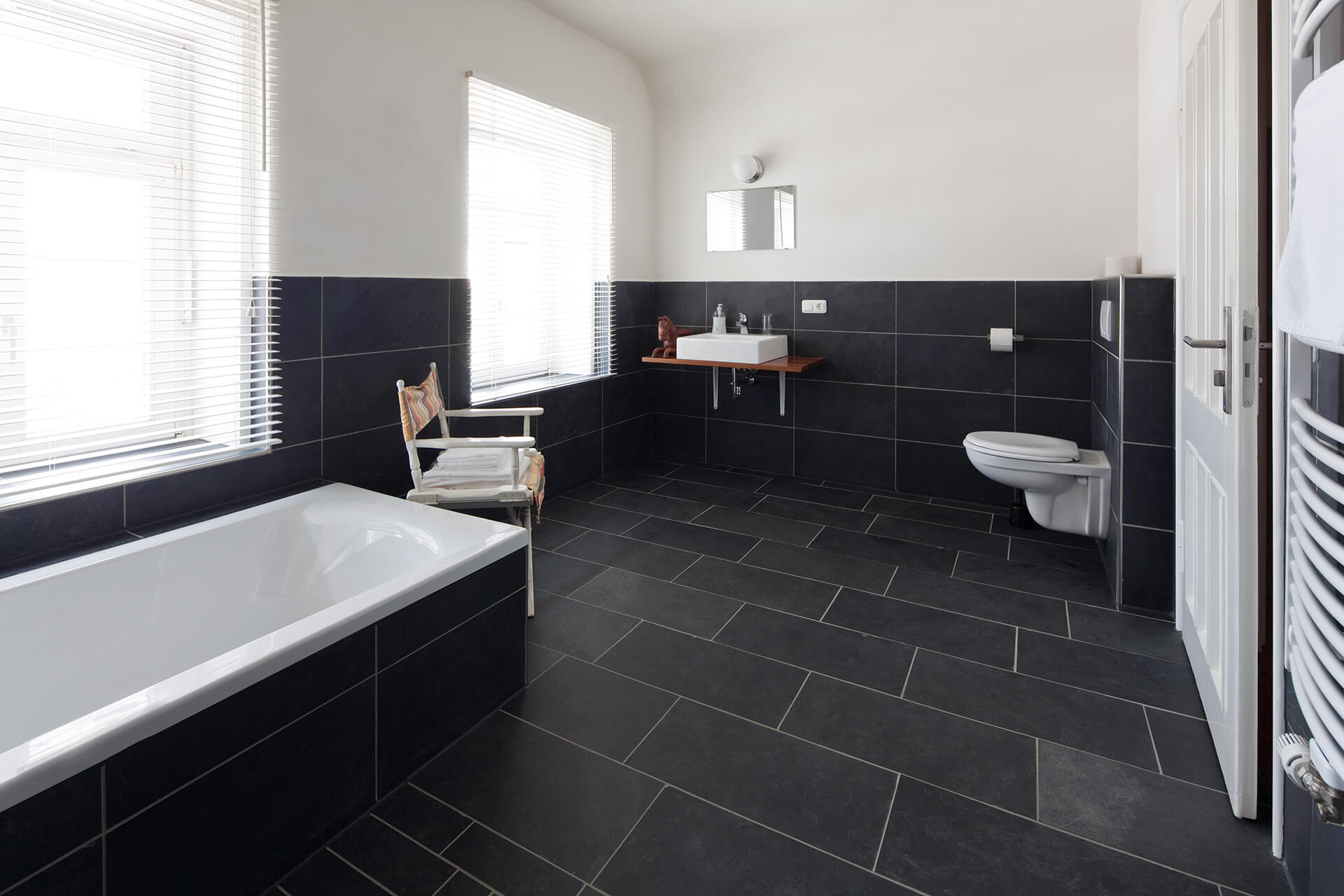
What Is Slate Bathroom Floor Tile?
Looking for an attractive and modern style for your bathroom? Natural slate floor tile is a stylish option to upgrade any home. Slate has been used for centuries in interior design due to its unique appearance and durability. Not only does it add elegance to any space, but it also offers many benefits that make it a great choice for bathrooms. From its slip-resistant surface to its lasting beauty, a slate bathroom floor can transform your space into a luxurious oasis. Here are the basics of what you need to know about slate bathroom tile floor.
What Is Slate Bathroom Floor Tile?
Slate bathroom floor tile is a type of natural stone tile that is commonly used as a flooring material in bathrooms. A natural stone, it is a fine-grained rock that is formed by the compression of sedimentary layers. Over time, the layers creates a dense and durable material that is resistant to water and stains.
Slate is available in a variety of colors, textures, and sizes, allowing you to create the perfect look for your bathroom. They can also be cut into a variety of sizes and shapes to suit different design preferences. In a bathroom, slate tiles are often used to create a sleek, contemporary look that is both stylish and practical.
They can be installed in a variety of patterns, from simple grid formations to more complex designs, and can be paired with complementary materials, such as glass or metal accents, to create a unique and personalized look.
Additionally, slate is one of the most durable materials available and is resistant to scratches and stains. It also requires very little maintenance – simply sweeping or mopping regularly.
What Are the Pros and Cons of Slate Bathroom Flooring?
Installing slate tile flooring is a great way to add beauty and functionality to your bathroom. However, using slate tile as flooring in the bathroom has both advantages and disadvantages. Here are some of the pros and cons to consider:
Pros:
- Durability: Slate is a highly durable and long-lasting material that is resistant to scratches, cracks, and chips. It can withstand heavy foot traffic, making it an ideal choice for bathroom flooring.
- Slip-resistant: Slate is a naturally slip-resistant material, which can help prevent accidents and injuries in the bathroom, especially when wet.
- Aesthetics: Slate tiles come in a range of colors and patterns, making them a versatile and stylish option for bathroom flooring. They can be paired with a variety of decor styles and materials, from modern to rustic.
- Low maintenance: Slate is a low-maintenance material that is easy to clean and requires minimal upkeep. It is also resistant to water and stains, making it a practical choice for bathroom flooring.
Cons:
- Cost: Slate is typically more expensive than other types of flooring materials, such as ceramic or porcelain tile.
- Installation: It can be difficult to install due to its weight and irregular shape, which can increase installation costs and require the services of a professional installer.
- Porosity: Slate is a porous material that can absorb moisture and stains if not sealed properly. This can lead to discoloration and damage over time.
- Coldness: It is often cold to the touch, which can be uncomfortable for some people, especially during the colder months.
Overall, slate tile can be a great choice for bathroom flooring, but it is important to consider the potential drawbacks and ensure proper installation and maintenance to ensure its longevity and durability.
Frequently Asked Questions About Slate Bathroom Flooring
Is slate flooring tile a good choice for bathrooms?
Slate is an excellent choice for bathroom flooring because it is extremely durable and water-resistant. It has a textured surface that is slip-resistant but still easy to clean.
What sizes and shapes are available for slate flooring tile?
Slate flooring is available in various sizes and shapes, including rectangular, square, and irregularly shaped tiles. The most common sizes for bathroom flooring are 12×12 inches and 18×18 inches.
What color does slate flooring come in?
Slate flooring comes in a range of colors, including gray, black, green, red, and purple. The color of the slate is determined by the minerals present in the stone. It can also be cut and finished in various styles, such as honed, cleft, and tumbled.
How much does slate flooring tile for a bathroom cost?
On average, the cost of slate bathroom floor tile ranges from $5 to $15 per square foot. However, the cost can vary depending on the size of the bathroom, the quality of the slate, and the complexity of the installation.
How do you clean and maintain slate floor in a bathroom?
The best way to clean slate is with mold soap and warm water. Gently scrub the tiles with a soft-bristled brush. Avoid using abrasive cleaners, which can scratch the surface of the slate. To maintain the slate, you should seal it periodically to protect it from water damage and stains.
How long does slate flooring last?
Slate flooring is a highly durable material and can last for decades. The lifespan of slate flooring largely depends on factors such as the quality of the slate, the level of foot traffic it receives, and the amount of regular maintenance it receives. With proper sealing, regular cleaning, and occasional repairs as needed, a well-maintained slate floor can last for many years without showing significant signs of wear and tear.
Can you install slate over existing bathroom flooring?
Technically, you can install slate tile over existing bathroom floor. However, you need to make sure the flooring is level and structurally sound before installation. Otherwise, you run the risk of future damage or cracked tiles. Ideally, you should remove the existing flooring and properly level the subfloor before installing slate bathroom floor.

